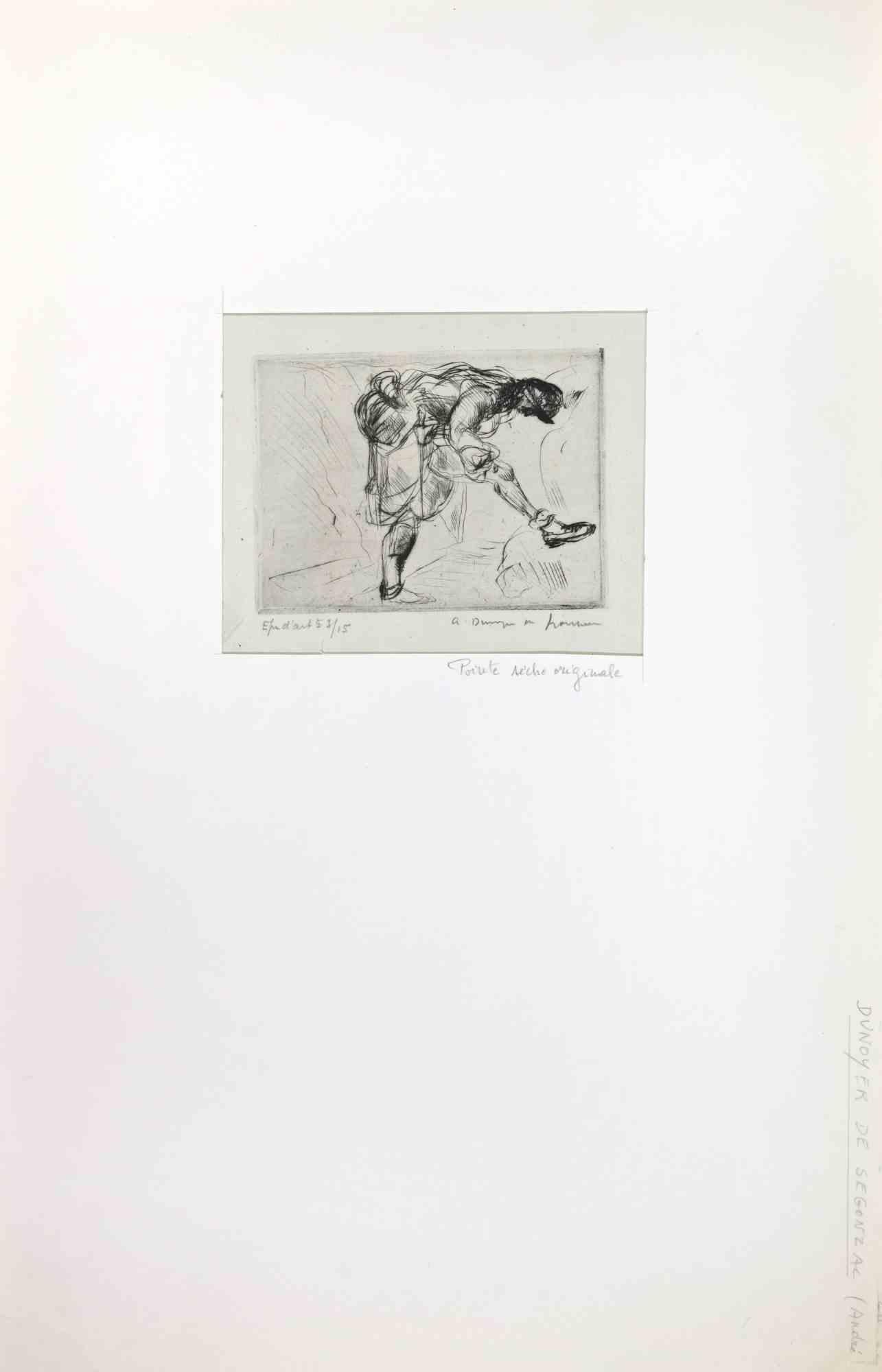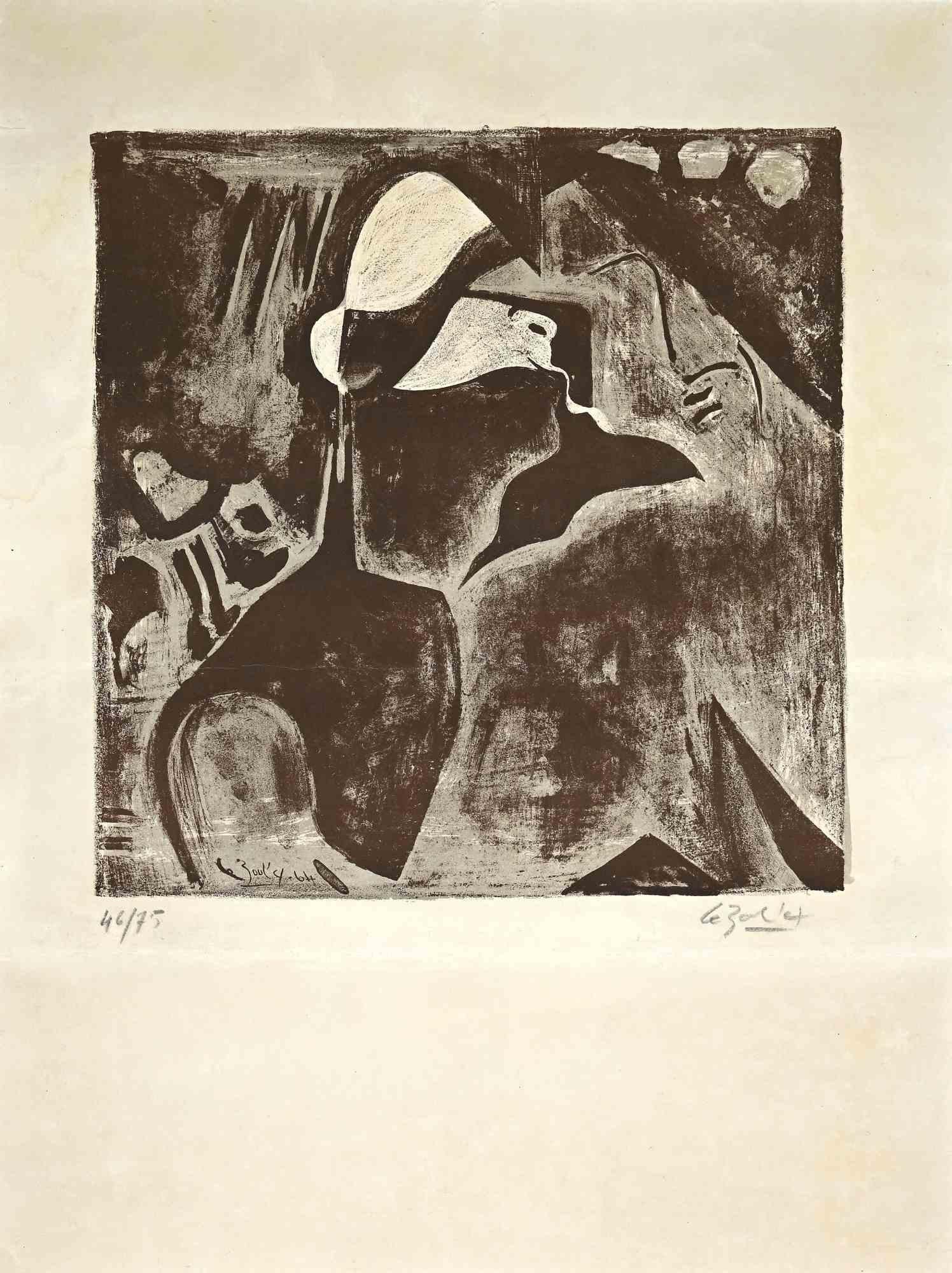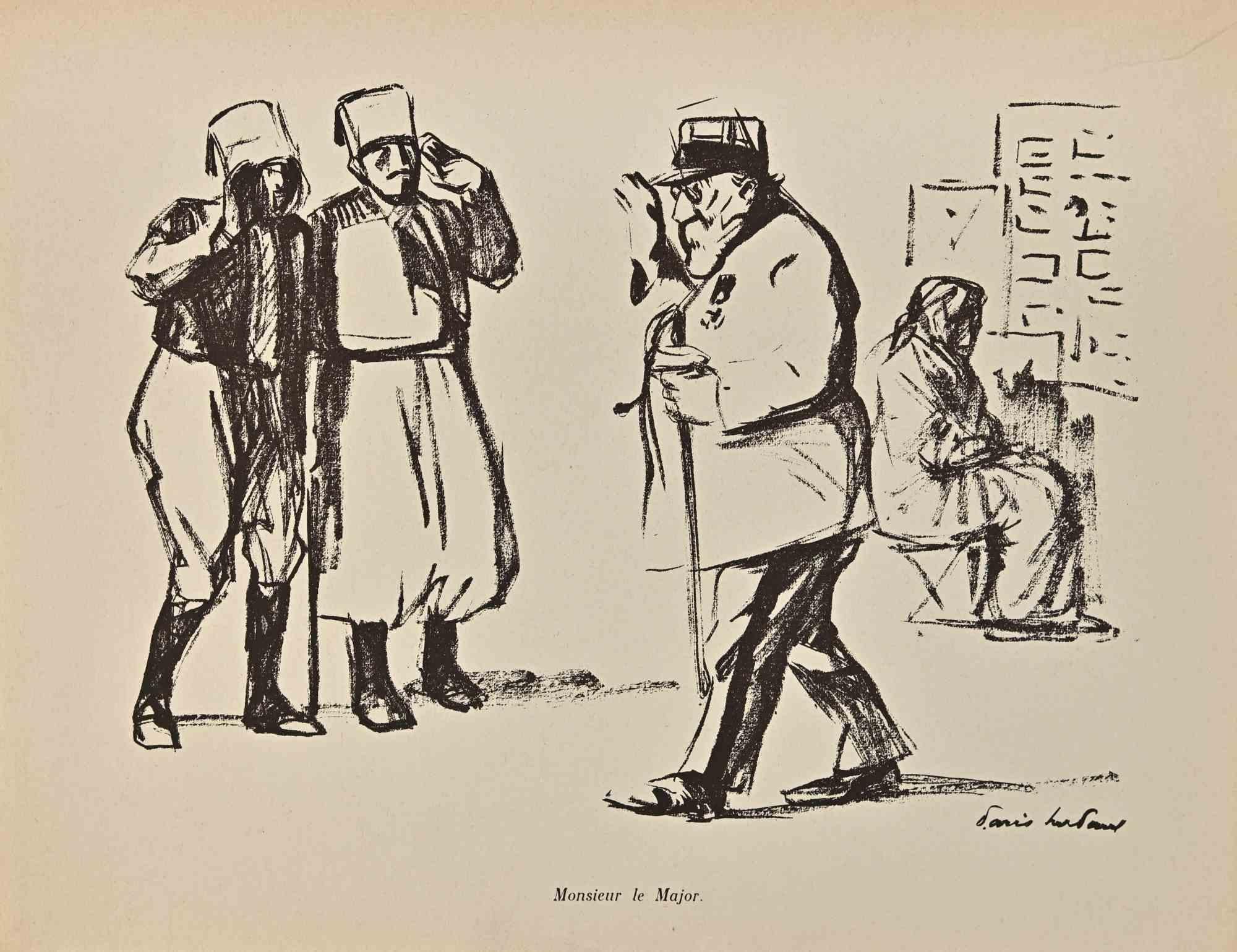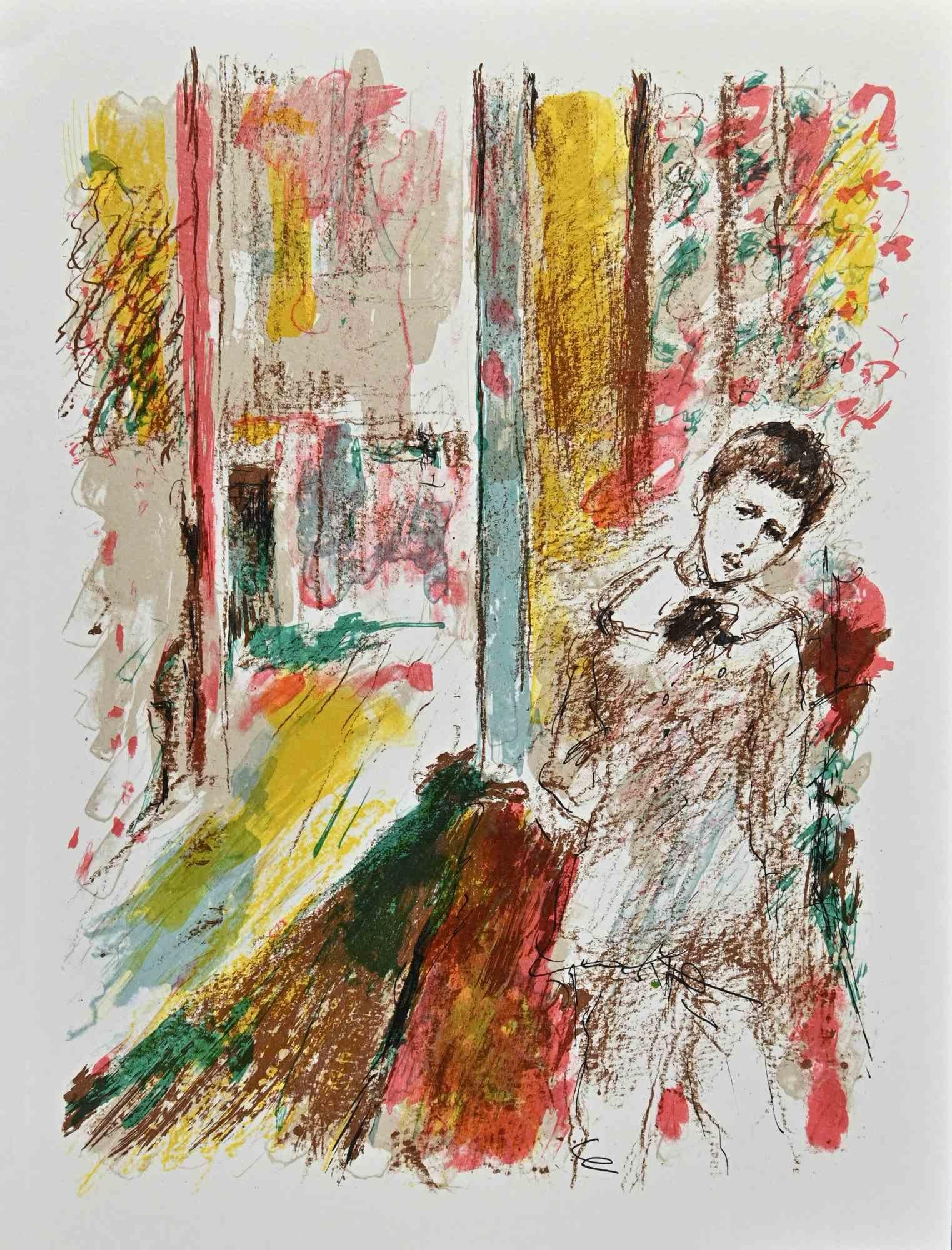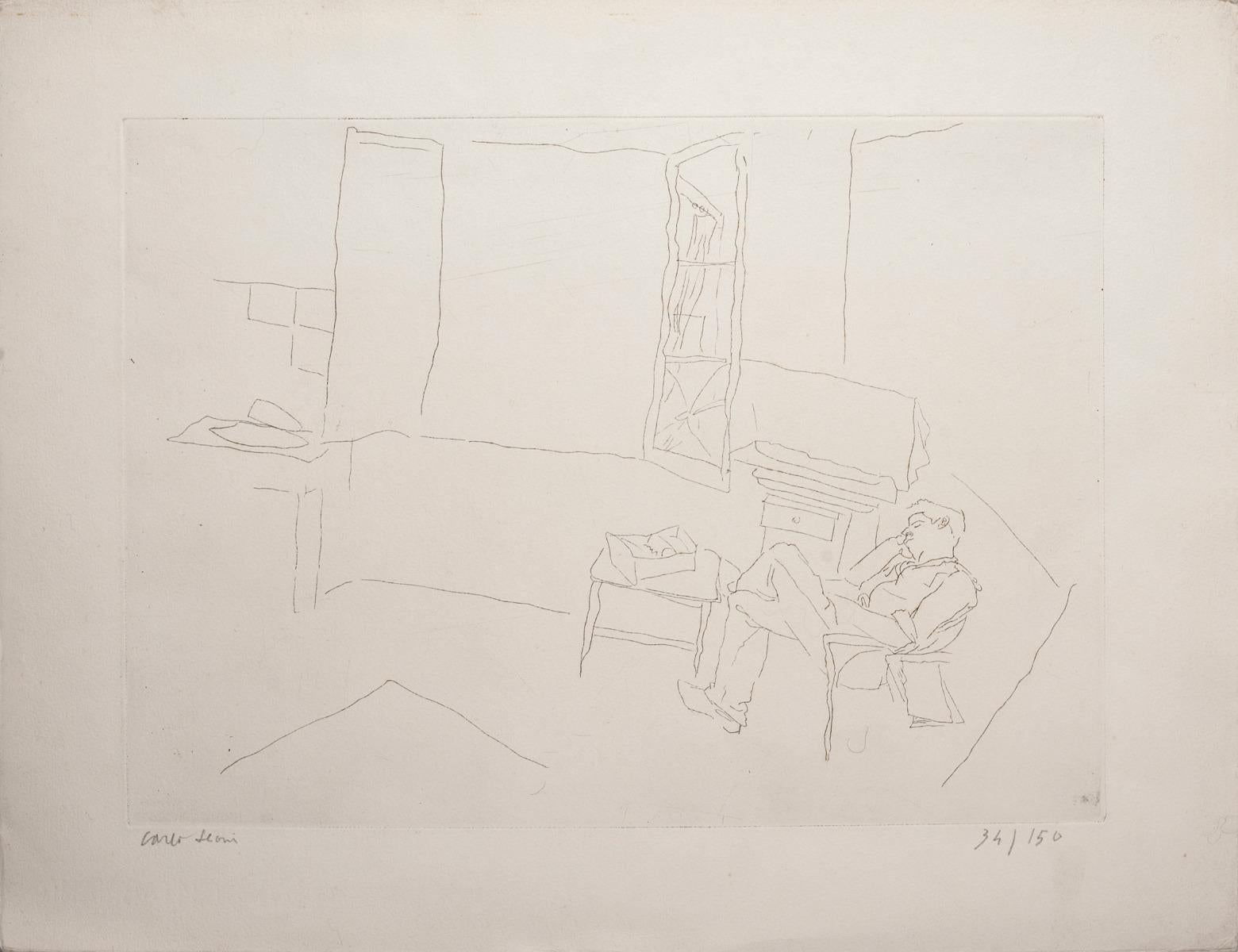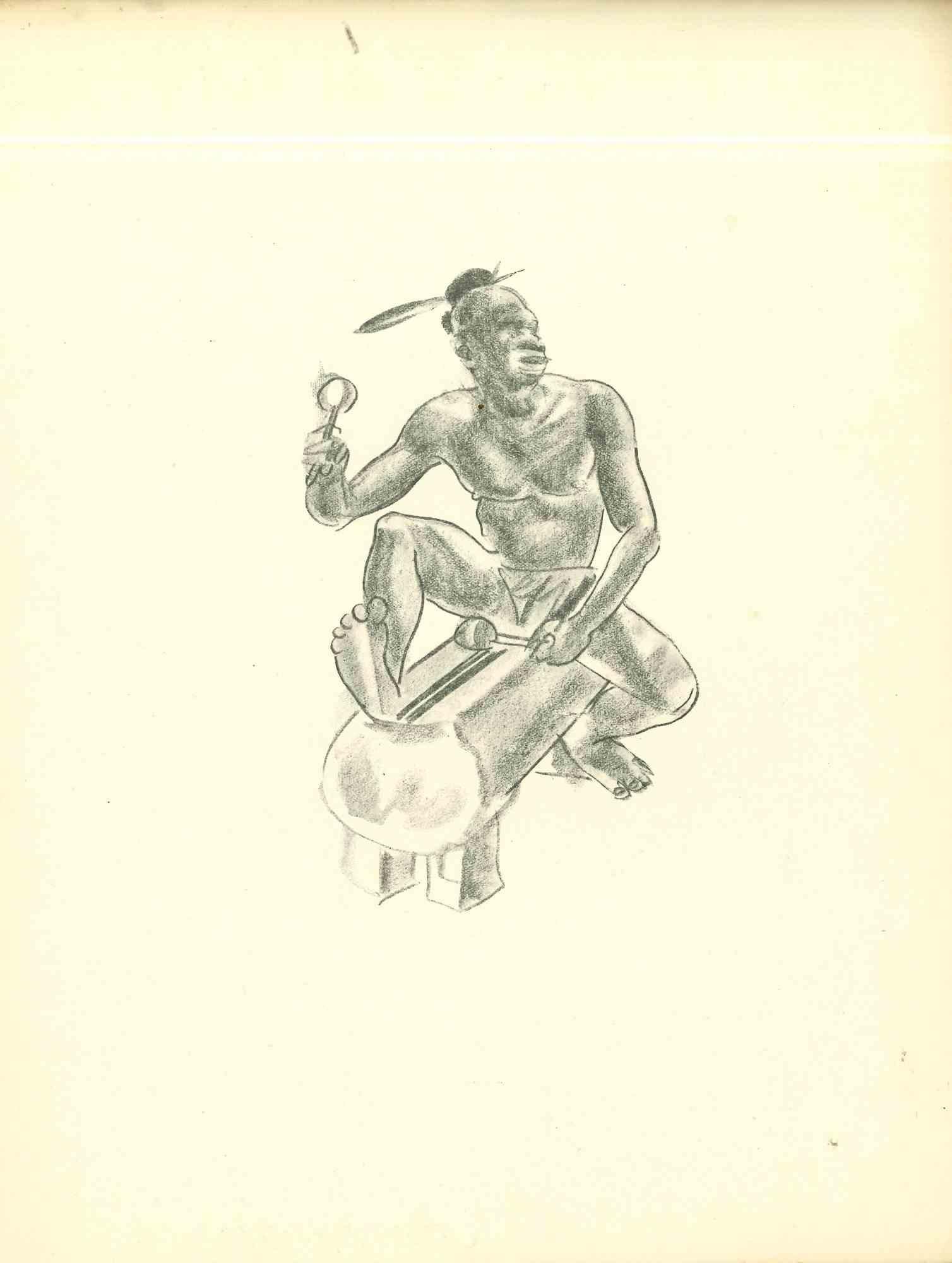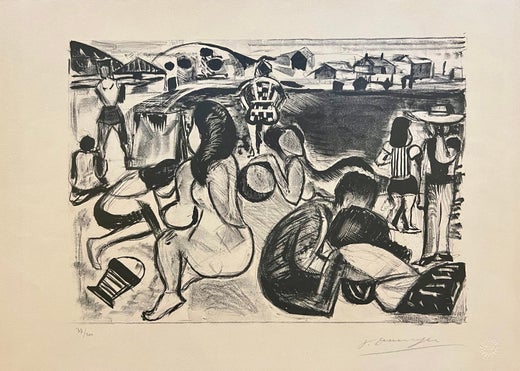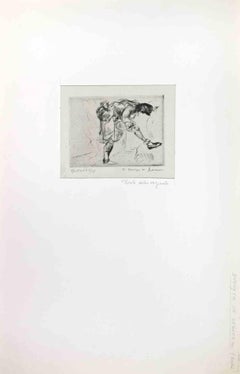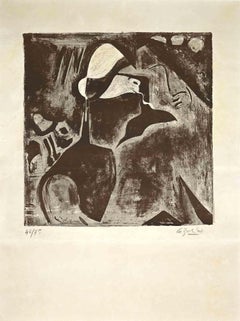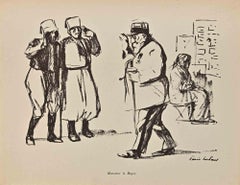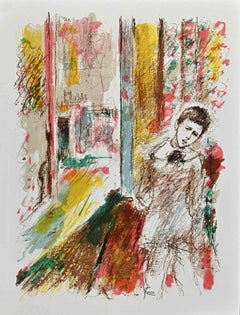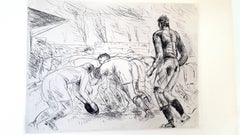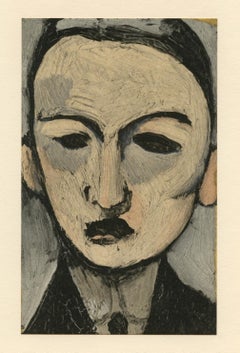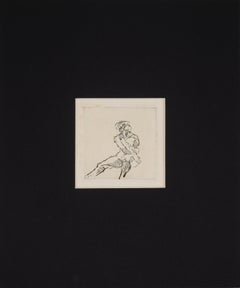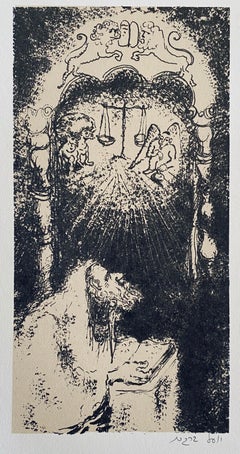François DesnoyerFigure of Man - Original Lithograph By François Desnoyer- Mid-20th CenturyMid-20th Century
Mid-20th Century
About the Item
- Creator:François Desnoyer (1894 - 1972, French)
- Creation Year:Mid-20th Century
- Dimensions:Height: 11.03 in (28 cm)Width: 8.67 in (22 cm)Depth: 0.04 in (1 mm)
- Medium:
- Movement & Style:
- Period:
- Framing:Framing Options Available
- Condition:Insurance may be requested by customers as additional service, contact us for more information.
- Gallery Location:Roma, IT
- Reference Number:Seller: T-1299401stDibs: LU65039816822
François Desnoyer
Francois Desnoyer ( French, 1894-1972) was a painter and printmaker born in Montauban, France. His work is often considered a unique synthesis of the Cubist and Fauvist movements. His early studies at the Ecole des Arts Decoratifs were interupted by WWI. After the war, he moved to Paris, working alongside artists such as Marcel Gromaire, Andre Lhote, and Albert Marquet, exhibiting frequently at the Salon des Independants. In the 1950s, he exhibited regularly throughout France and Europe, including the 1952 Venice Biennale with Fernand Leger and Raoul Dufy. Later, he would establish the Desnoyer Foundation in Saint-Cyprien, France, which regularly hosts artists in residence and exhibitions of contemporary art. His work is held in various private and public collections, including the Tate Galleries, England.
- ShippingRetrieving quote...Shipping from: Monaco, Monaco
- Return Policy
More From This Seller
View AllMid-20th Century Modern Figurative Prints
Etching
1940s Modern Portrait Prints
Lithograph
Early 20th Century Modern Figurative Prints
Lithograph
Mid-20th Century Modern More Prints
Lithograph
1950s Modern Figurative Prints
Etching
1930s Modern Portrait Prints
Lithograph
You May Also Like
1920s Modern Portrait Prints
Etching
1950s Portrait Prints
Lithograph
1960s American Impressionist Figurative Prints
Paper, Ink, Lithograph
Mid-20th Century Modern Figurative Prints
Lithograph
1940s Modern Figurative Prints
Lithograph
1930s Art Deco Prints and Multiples
Etching
